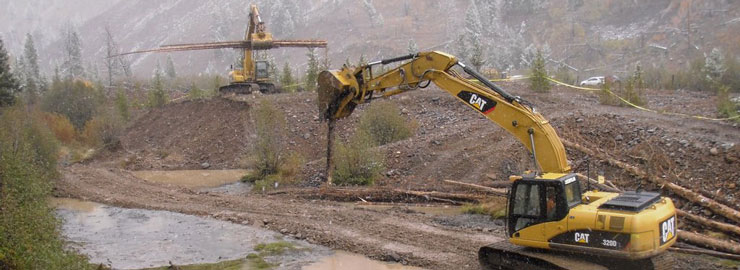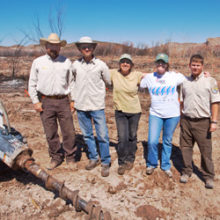- The study documented 140 projects during 2008-2013 in Custer and Lemhi counties; with economic benefits distributed across a range of sectors, and an average annual output of 70 jobs and $9.1 million in total value.
- The economic benefits from restoration are especially important in rural counties which have strong ties to industries, such as agriculture and outdoor recreation, closely linked to the health of land and water resources.
- To measure and demonstrate the economic return from restoration expenditures, we created a new tracking template can help make future analyses of economic impacts easier and more accurate.

Landscape Restoration Benefits Rural Communities
This report (PDF) provides a straightforward way to calculate the economic impacts of natural resource restorative activities to nearby communities that should be helpful to local officials, agency staff, policy analysts, and others.
Working in partnership with Salmon Valley Stewardship, Headwaters Economics documented 140 projects during 2008-2013 in Custer and Lemhi counties, finding that this restoration work distributed economic benefits across a wide range of sectors, generating an average annual output of 70 jobs and $9.1 million in total value.
The economic impacts of this work in Custer and Lemhi counties grew throughout the 2008-2013 study period; with expenditures increasing an average of 14 percent annually and associated employment growing an average of 18 percent annually.
At the end of the study in 2013, restoration expenditures were $8.2 million, resulting in $11 million in total output and creating 89 jobs in the two counties.
This detailed spreadsheet (Excel) shows year-by-year project results.
Perspective
While this study covered 140 projects, it does not measure the full economic impact of the expenditures in the study region because of incomplete project data for additional projects.
The components of the restoration industry that were measured in this report are about half as large as the two-county region’s manufacturing sector (181 jobs in 2011) and slightly larger than the wholesale trade sector (87 jobs in 2011).
These economic benefits would be significant for any rural part of the country, and they are especially important in Custer and Lemhi counties which have strong ties to industries, such as agriculture and outdoor recreation, that are closely linked to the health of land and water resources.
This study did not measure the long-term economic benefits of healthier rivers, forests, and rangelands. Restoration projects often result in improved outdoor recreation, such as hunting and angling, and ecosystem services, such as flood control and clean water. These broader benefits represent an ongoing return on investment.
Measuring Future Work
Going forward, the ability to accurately measure and demonstrate the economic return from restoration expenditures will be crucial to efforts to expand restoration investment. This restoration project tracking template (PDF) created by Headwaters Economics should help make future analyses of economic impacts easier and more accurate.


